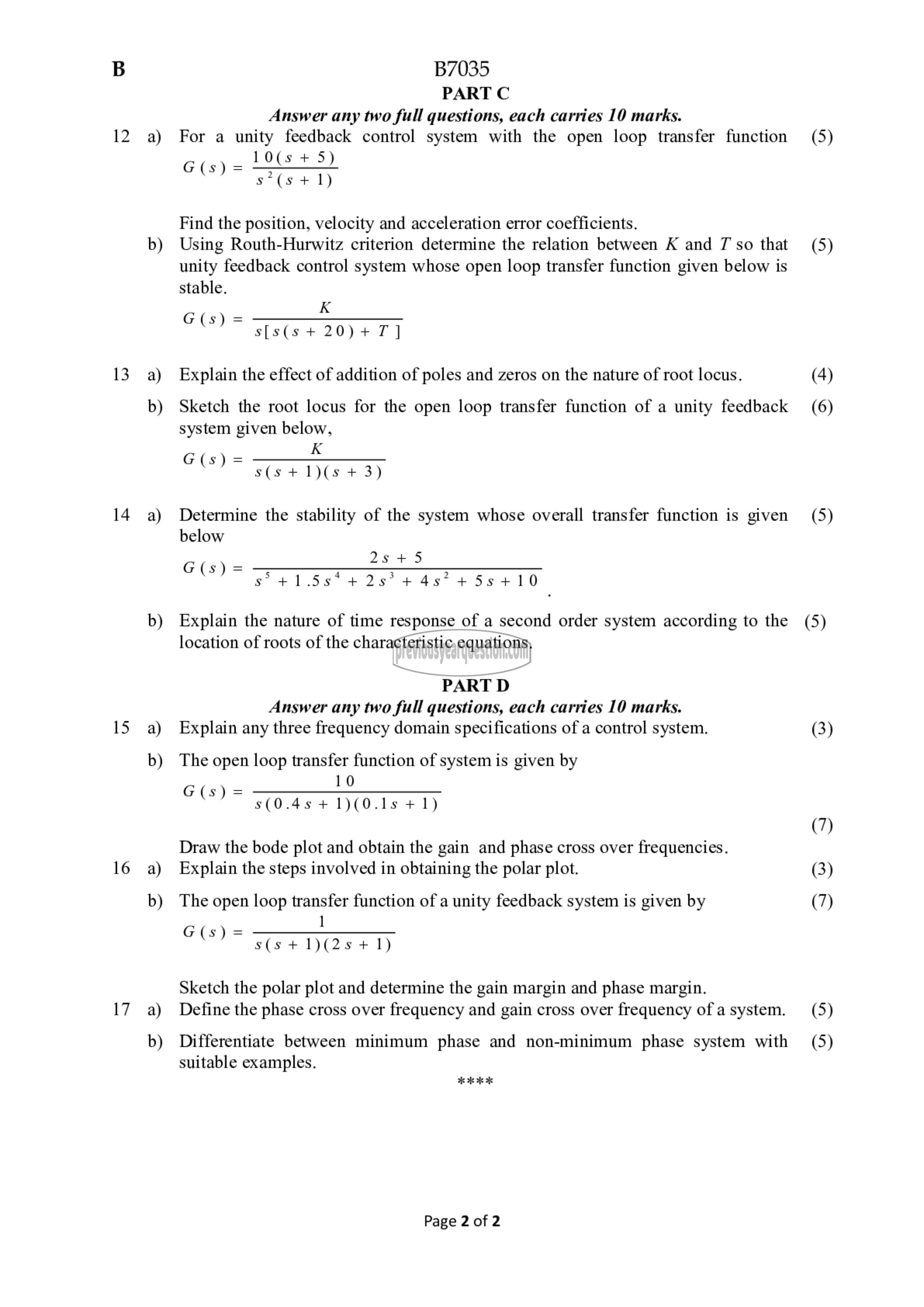APJ ABDUL KALAM TECHNOLOGICAL UNIVERSITY Previous Years Question Paper & Answer
Semester : SEMESTER 5
Subject : Linear Control Systems
Year : 2017
Term : DECEMBER
Scheme : 2015 Full Time
Course Code : EE 303
Page:2
12
13
14
15
16
17
a)
b)
a)
b)
a)
b)
a)
b)
a)
b)
a)
b)
B7035
PART C
Answer any two full questions, each carries 10 marks.
For a unity feedback control system with the open loop transfer function (5)
G(s) = 10(* + 5)
s*(s4+1)
Find the position, velocity and acceleration error coefficients.
Using Routh-Hurwitz criterion determine the relation between K and 7 so that (5)
unity feedback control system whose open loop transfer function given below is
stable.
G(s)= 000
s[s(s+20)+T]
Explain the effect of addition of poles and zeros on the nature of root locus. (4)
Sketch the root locus for the open loop transfer function of a unity feedback (6)
system given below,
G(s) K
s(s+1)(s + 3)
Determine the stability of the system whose overall transfer function is given (5)
below
G(s) = 25 + 5
10 + ك5 + 452 + 253 + 1.554 + °$
Explain the nature of time response of a second order system according to the (5)
location of roots of the characteristic equations.
PART 0
Answer any two full questions, each carries 10 marks.
Explain any three frequency domain specifications of a control system. (3)
The open loop transfer function of system is given by
G 10
G(s) = للد ப سس
5)0.45 + 1()0.15 +1)
(7)
Draw the bode plot and obtain the gain and phase cross over frequencies.
Explain the steps involved in obtaining the polar plot. (3)
The open loop transfer function of a unity feedback system is given by (7)
G(s)= —_! کٹ ھ
s(s+1)(2s+41)
Sketch the polar plot and determine the gain margin and phase margin.
Define the phase cross over frequency and gain cross over frequency ofasystem. (5)
Differentiate between minimum phase and non-minimum phase system with (5)
suitable examples.
೫ ೫ ಸೇ باد
Page 2 of 2
